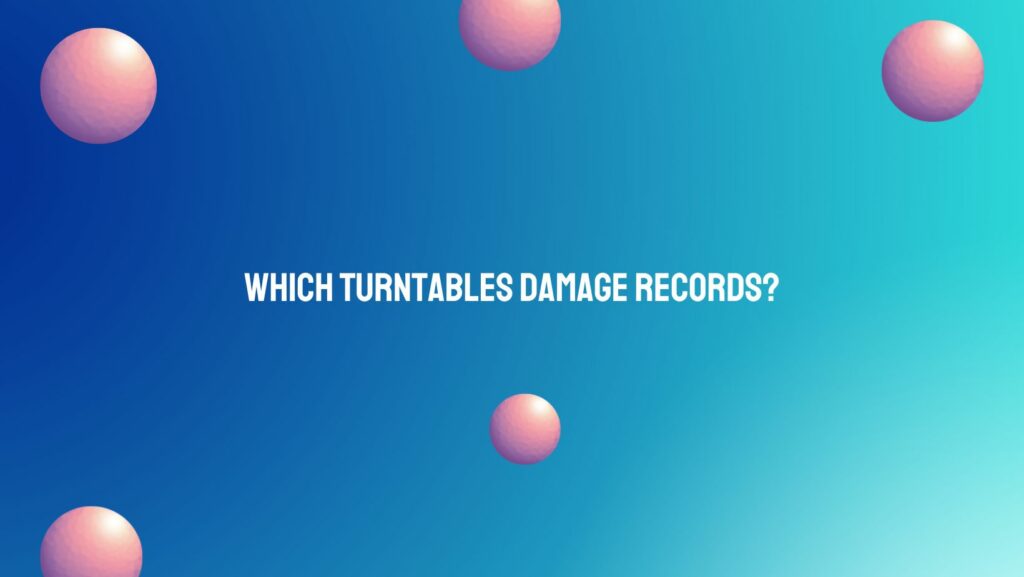Vinyl records have experienced a resurgence in popularity in recent years, drawing both seasoned audiophiles and newcomers alike. The turntable, as the primary player of these cherished discs, plays a pivotal role in preserving the integrity of the music etched into the grooves. However, not all turntables are created equal, and some can potentially harm your precious vinyl collection. In this article, we delve into the factors that contribute to record damage and identify the types of turntables that may pose risks to your cherished vinyl.
- The Anatomy of Turntables: Before delving into which turntables can harm records, it’s crucial to understand the fundamental components of these devices. A turntable comprises various parts, including the platter, tonearm, cartridge, stylus, and motor. Each component plays a critical role in accurately reproducing the music from vinyl records.
- Factors Contributing to Record Damage: Several factors can contribute to the degradation of vinyl records during playback. One of the most significant factors is the tracking force exerted by the tonearm and stylus onto the record surface. An excessively high tracking force can cause wear and tear on the delicate grooves, resulting in distortion and decreased sound quality over time.
Additionally, the quality of the cartridge and stylus can significantly impact the condition of your records. A worn or misaligned stylus can dig into the grooves, causing irreparable damage and diminishing the overall fidelity of the music.
Moreover, turntables with poor isolation and vibration control can introduce unwanted noise and resonance, further compromising the playback quality and potentially damaging the records.
- Types of Turntables That Can Damage Records: a. Crosley-style Turntables: While inexpensive and readily available, Crosley-style turntables often feature low-quality components and lack proper tracking force adjustment mechanisms. The heavy tracking force exerted by the ceramic cartridges can accelerate groove wear and lead to compromised sound quality. b. Vintage Turntables with Poor Maintenance: While vintage turntables can offer excellent sound quality, models that have not been properly maintained may pose risks to your records. Worn-out components, including cartridges, styluses, and belts, can increase the likelihood of record damage during playback. c. Entry-level Turntables with Subpar Components: Some entry-level turntables prioritize affordability over build quality and performance. These turntables may feature lightweight platters, low-quality cartridges, and inadequate tracking force adjustment mechanisms, all of which can contribute to record damage over time.
- Choosing a Turntable That Preserves Your Records: When selecting a turntable, prioritize models that prioritize build quality, precision engineering, and proper tracking force adjustment mechanisms. Look for turntables equipped with high-quality cartridges and styluses designed to minimize wear on vinyl records.
Furthermore, consider investing in turntables with robust isolation and vibration control features to minimize unwanted noise and resonance during playback.
Conclusion: Vinyl records represent a cherished medium for music enthusiasts worldwide, offering a tangible and immersive listening experience. However, the choice of turntable can significantly impact the longevity and fidelity of your record collection. By understanding the factors that contribute to record damage and selecting turntables that prioritize quality and precision, you can preserve the integrity of your vinyl collection for years to come. Choose wisely, and let the music spin on, free from harm.


